D.G. Manktelow needed a few college credits, and had an interest in photography, so took a photography class in East Sussex, England, in 1960. He documented his friends in the the British Rocker scene from 1960-65. Be careful what you study as an afterthought in college – it’s likely to become your career after graduation, as happened with D.G., who became a professional photographer. His son Adrian Manktelow has kindly consented to show some of D.G.’s photos on The Vintagent, as a tribute to his father’s skill, and the unique period he documented. Many of the riders remain family friends, although a few didn’t pass the trial by fire of the Rocker years...[Words: Paul d’Orléans. Photos: D.G. Manktelow]
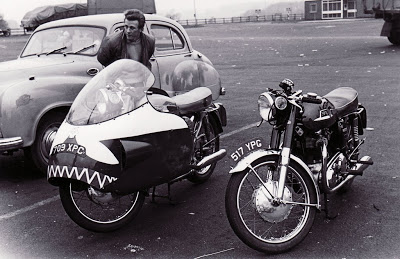
And all the classic Rocker gear is represented; the Goldies, Bonnies, Dommis, dustbin fairings, even a Norvin, and at the end, a couple of Japanese lightweights…. There was always a bit of real racing to inspire the ‘go faster’ look of the Rocker boys; these shots (above and below) of a racing Dominator 88 were taken at Mallory Park. A very tasty machine indeed, and worthy of imitation.
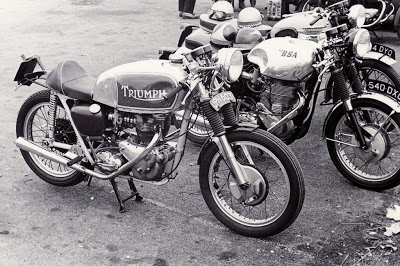
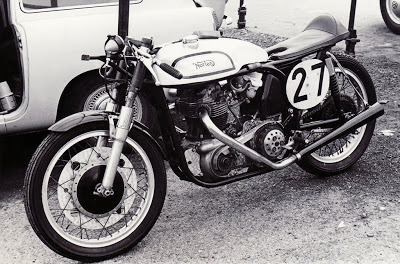
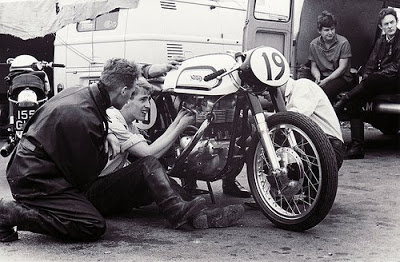
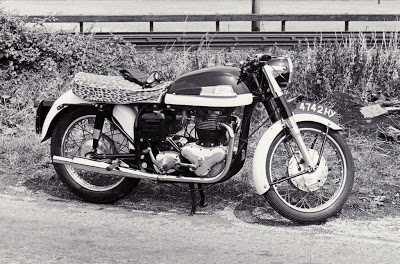
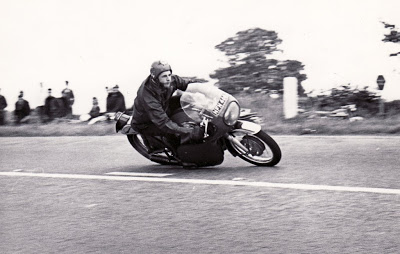
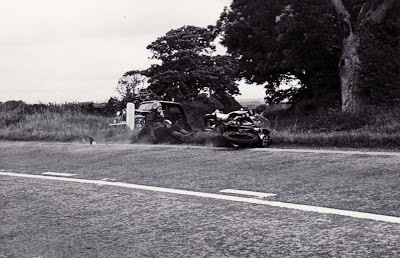
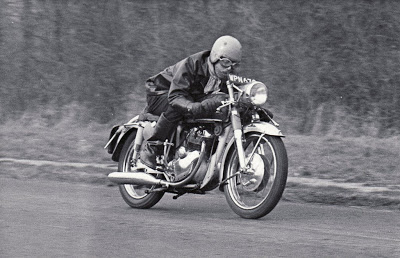
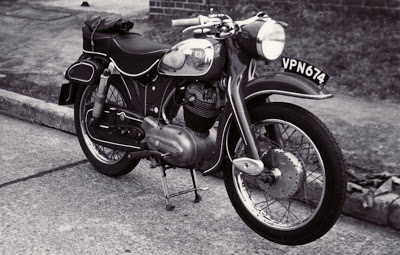
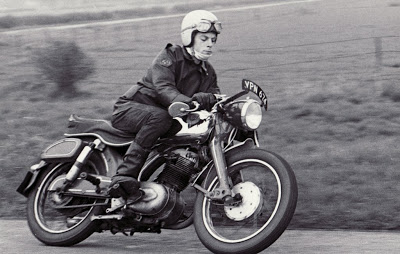
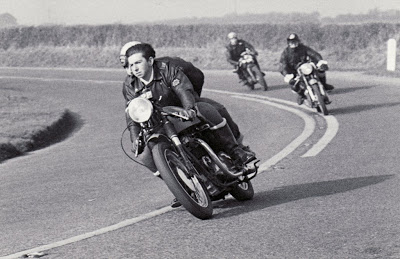
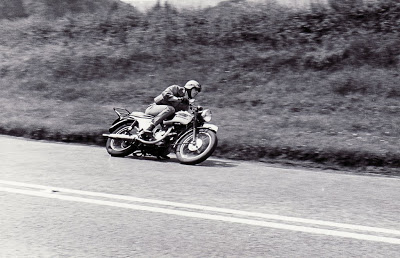
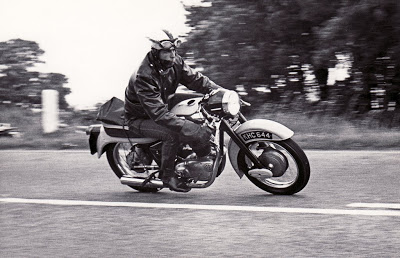
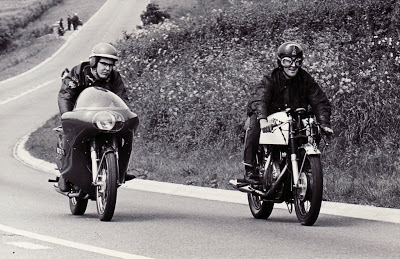
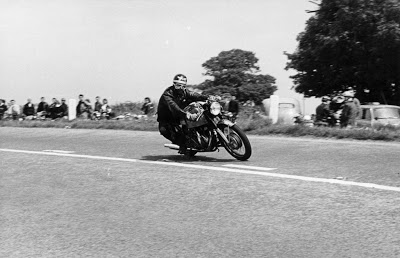
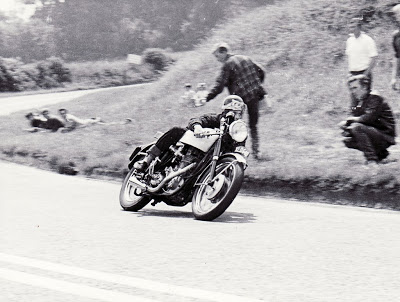
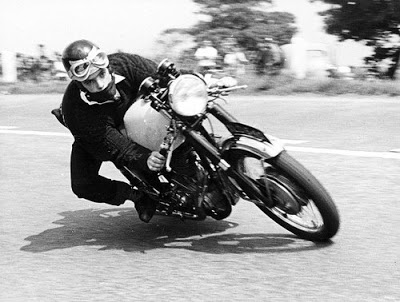
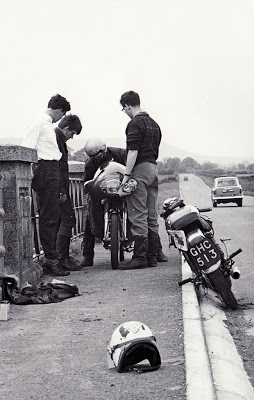
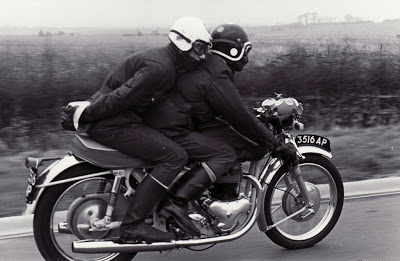
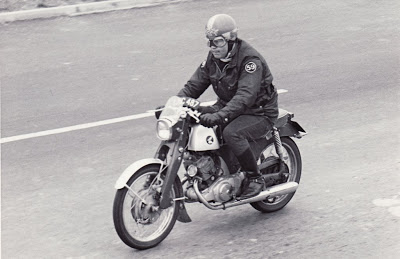
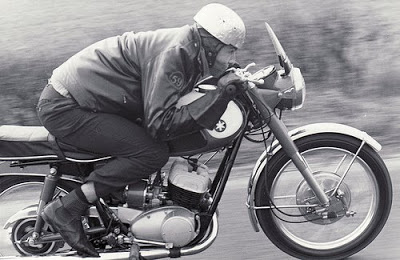
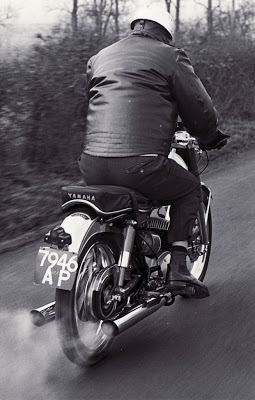
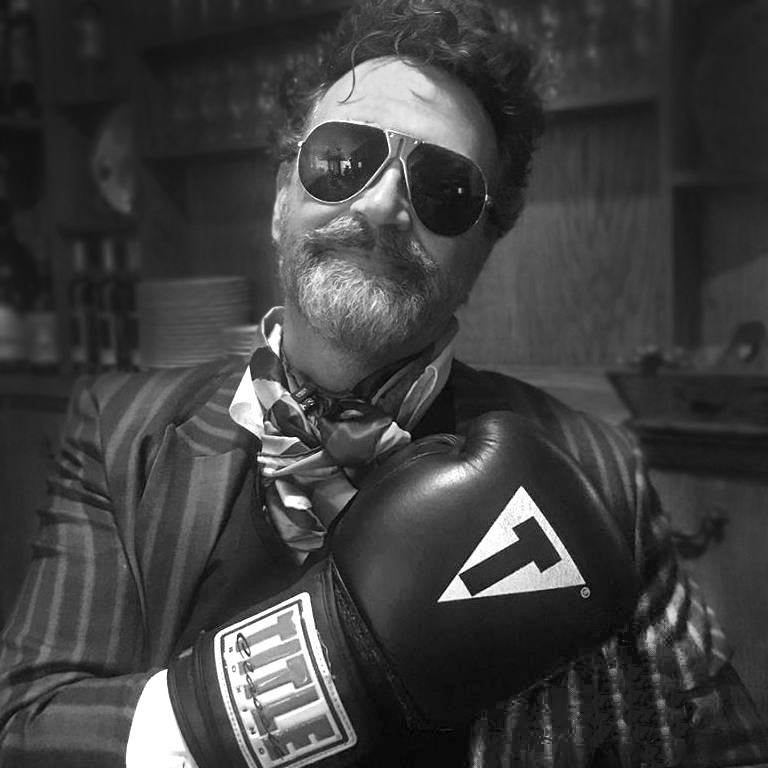

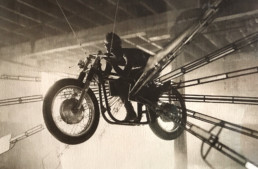
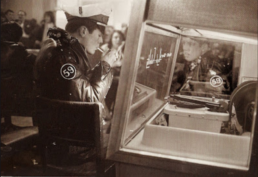
Very nice pics, the navigator racer superb, ans also Norton 88 and 99, my actual racing bike!
Many thanks for this fabulous post!
Great post, Paul. I’d like to see even more of the “lifestyle” and people shots that Manktelow did.
It’s always as interesting as the machinery!
BTW, my first bike was one of those Yam YDS’s. Mine was a ’65 YDS-3, 305cc , a Calif.-only model.
In ’68-’69 people were surprised how quick the little things were.
When I saw the last pic on this post, I could almost
smell the smoke and hear that particular “Ring-a-Ding”sound !
Beyond excellent!!
Hi Paul,
Wow as always great photos! I think it’s worth mentioning that in 1961, Honda shall we say “broke on through to the other side” with Englishman Mike Hailwood at the helm taking first in the 125, 250, 350, and 500 cc Isle of Man. It must have been a chilling and sobering message to the British motorcycle empire. Below is a link to hear the venomous sound of a Honda 250/6. God Speed.
http://www.youtube.com/watch?v=iBrb93O_Xg0
Best,
R
Dear Paul,
Wonderful photographs by D. G. Mankletow on ’60s cafe racers. To wit, no one else seems to have picked up on your challenge to name the two other factory-produced variants, after the RE Continental, and take you up on your prize (?). This is tricky, as presumably you’ve excluded, by including in the story, the DBD34 Gold Star, the Clubman’s edition which would technically qualify. So what’s left? Of course, my beloved Velo Thruxton. But after that, if we’re sticking with English product? Hard to say, depending on how you define “factory.” Some might claim the Rocket Gold Star hits the mark, others the late series AMC CSRs (especially with the Atlas engine). If you don’t
confine things to “Made in England,” how about Honda’s delicious GB 500 TT, though it’s really intended as a 7R homage more than anything else. Or, sticking with things British, how about the G50CSR, aka the Matchless Golden Eagle, even if only a handful were produced and all, apparently, were sent to the States?
Am I missing something you’re thinking of on the Triumph end (Meriden, not Hinckley)? Lots of friends turned their Daytonas and Bonnies over to cafe-racer specs, but those, I suspect, don’t qualify. So, please, come clean, after the Conti and the Thruxton, what are you thinking of?
Jim, I didn’t exclude the Gold Star just because it was in the post – so that and the Velo Thruxton are in my humble opinion the only other proper Cafe Racers produced for general sale, with the Connie GT – clip-ons, rearsets, alloy rims, big GP carb, fast, mildly anti-social, totally desireable then and now. You win!
Other bikes came close, but didn’t have all the right bits, even if you could add/order them.
I was thinking about defining the average cafe racer, and why so many late comers and overseas people misunderstand the genre. Here’s my first guess, it was about education. At the time mid-Fifties to late Sixties, if you failed or passed the eleven plus exams more or less decided your career, class, steam for life, taken at eleven years of age. It put you in one of two streams – fail secondary modern, pass grammar school; second mod meant you were factory fodder, pass you went to grammar school – a direct lead into university , but here’s the catch – secondary modern means you could get an apprenticeship, five years. At the time part of the apprenticeship was one week a month at a technical college on full pay – thank you Labour Party – so when you came out of the apprenticeship tunnel, you had four years of work and one of technical college. The grammar school grads were driving BMWs, but could not fix them!
What a unique set of high quality photographs. Wouldn’t it be great if they were issued in book form. Is Mr. Manktelow still with us? Could you tell us some more about his life?
Outstanding photos! (Just wondering if that Norton ‘Naviracer’ was the one I towed home, back in ’65?)
That Goldie with the alloy tank, looks very similar to the one owned by ‘Mad Johnny’ (John Davine).
I was a member of the Johnson’s Motorcycle Club- out by Brands Hatch, from ’65-’67, and had many friends among the guys who hung out there!
Thanks again, for taking me back!
Your father’s photos are some of the greatest capturing fully an element of life from that now bygone era. He must be truly applauded for his skill and quality of his photos for that time. Thank you so much for sharing them.